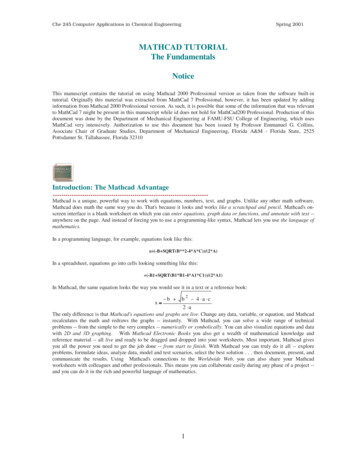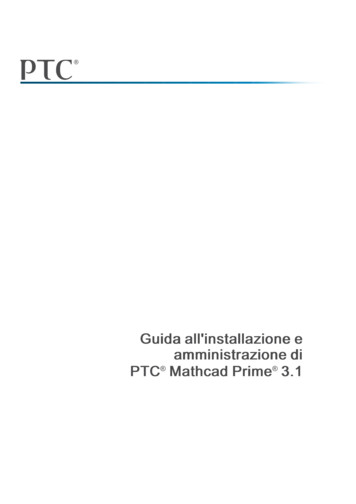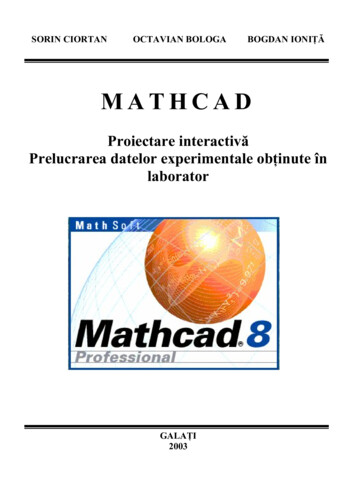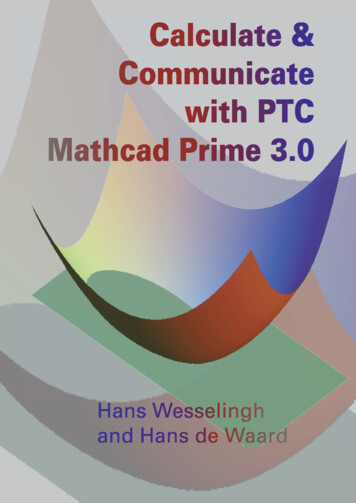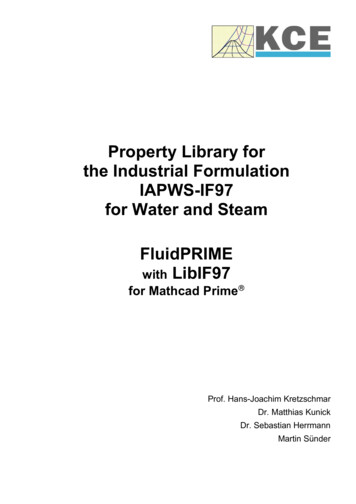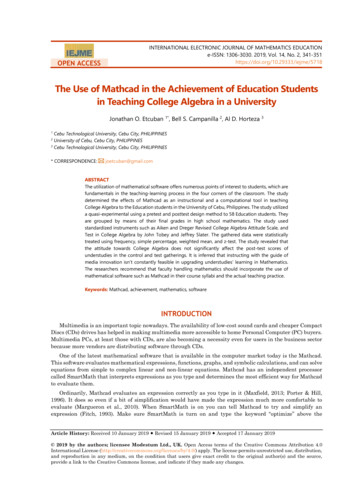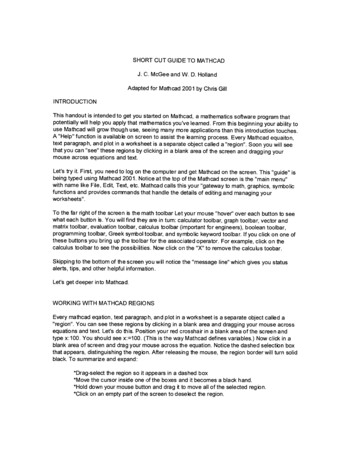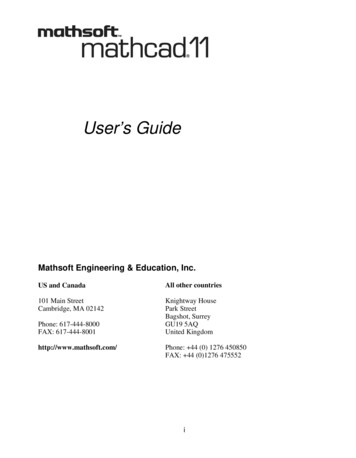![[ACADEMIC] Mathcad - HW05 - Rensselaer Polytechnic Institute](/img/62/hw05.jpg)
Transcription
Electric CircuitsECSE 2010HW05 solution1) Initial Values, Final ValuesR11L1TOPEN 021U11H5 OHMS2V124VR21 OHMC10.25FFor t 0, the switch is closed for a long time.1.1: Determine the voltage across each component for t 0-. Determine the current througheach component for t 0-.1.2: Determine the voltage across each component for t 0 . Determine the current across eachcomponent for t 0 .1.3: Determine the voltage across each component for t goes to . Determine the current across eachcomponent for to goes to .R24 ohmsI13u(t)R12 ohmsC10.5 F20 V1L10.6HV121.4: Determine the voltage across each component for t 0-. Determine the current througheach component for t 0-.1.5: Determine the voltage across each component for t 0 . Determine the current acrosseach component the t 0 .1.6: Determine the voltage across each componenet for t goes to . Determine the current acrosseach component for t goes to .1 of 6
Electric CircuitsECSE 2010HW05 solution2) Circuits and Differential EquationsRVA2LVsC12.1: In the above the circuit, find the differential equation for the voltage across the capacitor C, VC(t).The source is an arbitrary source.2.2: For the differential equation, determine the expression for the attenuation constant α, and the resonantfrequency, ωo.2.3: In the circuit below, find a differential equation for the voltage across C, Vc(t). The source is anarbitrary source.R1VAR21LVsC22.4: For the differential equation, determine symbolic expressions for the attenuation constant, α, and theresonant frequency, ωo, in terms of R1, R2, L and C.2 of 6
Electric CircuitsECSE 2010HW05 solution3) RLC Series CircuitsR220kV1 0V2 5TD 0TR 0TF 0PW 1PER 2R3R110k3kV11L122E-3R54kR48kC12E-90In the above circuit, the initial conditions are zero and the source can be considered a step function,5u(t).3.1: Determine and draw the simplified circuit schematic. (Hint: Thevenin equivalent with inductorand capacitor as a load.and yes, two (or more) components can be a load!).3.2: What is the initial ( t 0 ) current through the capacitor? What is the initial (t 0 ) voltage throughthe capacitor?3.3: What is the DC steady state current though the capacitor as t approaches ?3.4: What is the differential equation defining the current through the capacitor?3.5: Based on the differential equation, determine the s-polynomial for the circuit.3.6: Determine the roots of the polynomial.3.7: Is the system underdamped, overdamped or critically damped?3.8: Determine the general expression for the current through the capacitor (You do not need to determinethe coefficients).3 of 6
Electric CircuitsECSE 2010HW05 solutionProblem 4) RLC series circuitsR1L21E-2C1E-6V1In the above circuit, the source voltage is 5V for t 0 and 10 V for t 04.1: What is the intial (t 0 ) voltage across the inductor? What is the intial( t 0 ) current throughthe inductor?4.2: What is the DC steady state current through the inductor at t approaches .4.3: Symbollically (no values, just R, L, C etc.), what is the differential equation defining the voltageacross the inductor?4.4: For R 4kΩ, determine the voltage across the inductor as a function f time for t 0. (Hint: Usedifferential equation for current through the inductor. Then use the differential relationship betweeninductor current and inductor voltage.)4.5: For R 200Ω, determine the voltage across the inductor as a function of time for t 0.4.6: For R 50Ω, determine the voltage across the inductor as a function of time for t 0.4 of 6
Electric CircuitsECSE 2010HW05 solution2U2U1TOPEN 0TCLOSE 01125) RLC Parallel Circuits2R1I110E-3I210E-3L10.25C14E-81At t 0, U1 closes and U2 opens.5.1: What is the intial (t 0 ) current through the capacitor? What is the initial (t 0 ) voltage acrossthe capacitor?5.2: What is the DC steady state current though the capacitor as t goes to infinity?5.3: Find the current through the CAPACITOR as a function of time for R 12.5k. (Hint: Find the voltageacross the capacitor equation first then use the current-voltage relationship of a capacitor to get thecurrent! The reason why is because we know the intial conditions for a capacitor voltage not forcapacitor current which is necessary to solve the problem)5.4: Find the current through the CAPACITOR as a function of time for R 0.25k.5 of 6
(ohfwulf &lufxlwv (&6( : vroxwlrq &lufxlwv dqg 'liihuhqwldo (txdwlrqv 9v 5 / & 9 ,q wkh deryh wkh flufxlw ilqg wkh gliihuhqwldo htxdwlrq iru wkh yrowdjh dfurvv wkh fdsdflwru & 9& w
